Hyperbolic functions
Definitions of hyperbolic functions
Hyperbolic functions are written with trigonometric function and an h. That makes us think of something that has a close relationship with angle. But we must get rid of this impression. Hyperbolic functions have no relationship with angle. And a curve of hyperbola and a curve of hyperbolic function are quite different things. There is no relationship between hyperbolic function and hyperbola. And also a curve of hyperbolic function is quite different from y = 1/x .
Just take a look at courbes of two hyperbolic functions.
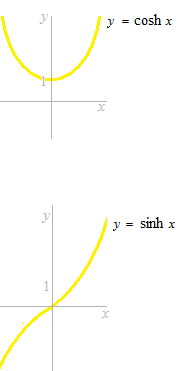
Hyperbola
Now, let’s see hyperbola which is quite different thing as hyperbolic function.
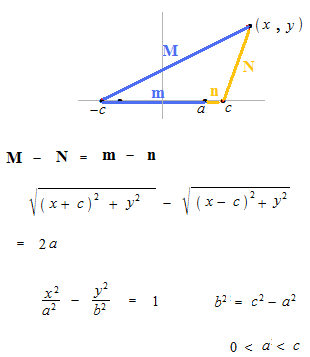
It should have been squared two times.
An example.
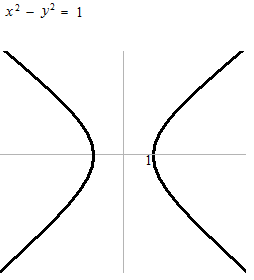
This is not function.
Now let’s see the curve of the function y = 1/x
If we do a rotation of the curve y = 1/x in the direction of −45° , does it become a curve of hyperbola?
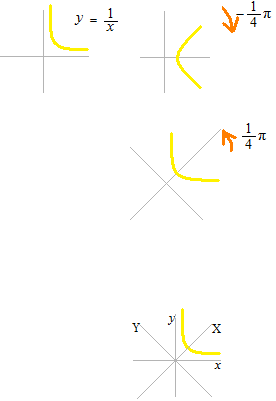
In order to do a rotation of a curve, we rather do a rotation of the axes in the other direction.
It is the same way as addition of angles in sin and cos.
We start with rotation of any point p in θ° .
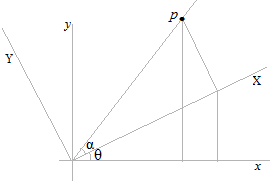
The initial position of p was written in x-y. That point will be expressed differently with X-Y coordinates.
What are we trying to find?
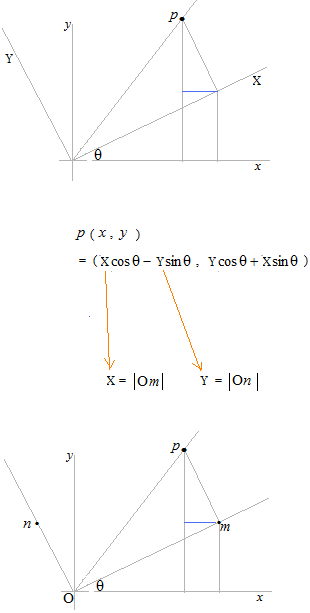
We see very often the name of an axis in equation. That means, as the axis itself has no quantitative value, the value of the point on the axis.
Now we want to express p with n and m.
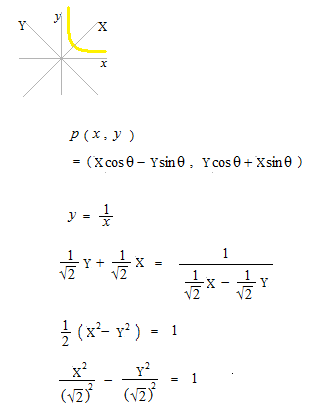
It’s a hyperbola curve, but little bit too big as the curve of what we wanted :
X2 − Y2 = 1 .
Let’s try to find a smaller one as turning X2 − Y2 = 1 in 45° .
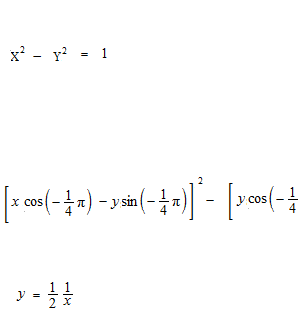
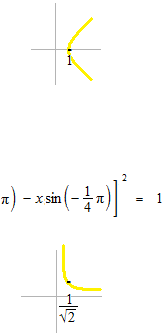
We will use this one later.
Now we take the bigger one again. Definition of hyperbolic function without using Taylor series.
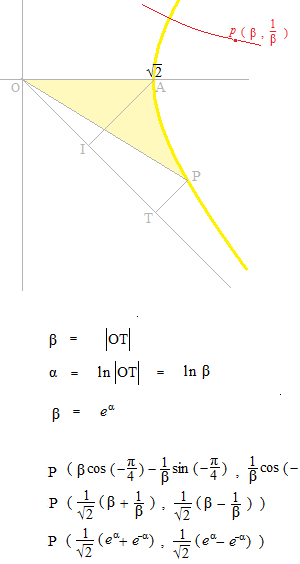

We make this curve smaller.
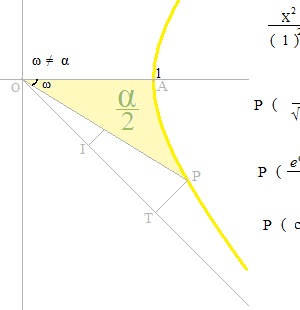
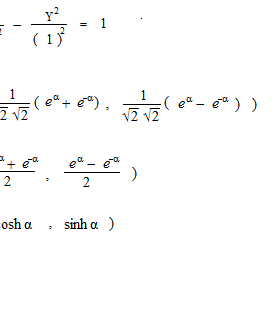
Decrease of area is square of decrease of length.
![]()
Hyperbolic functions are functions which express the relation between cosh α and sinh α which makes the area of OPA as a half the value of α .
The angle ω has no direct relation with the definition of the function.
The definitions of hyperbolic functions.
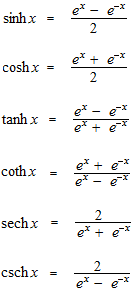
Derivatives of hyperbolic functions
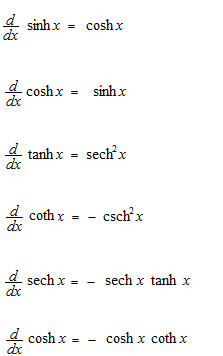
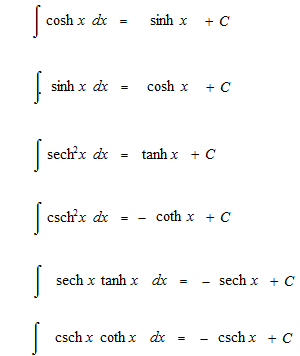
Differentiation of exponentiel function was like this.
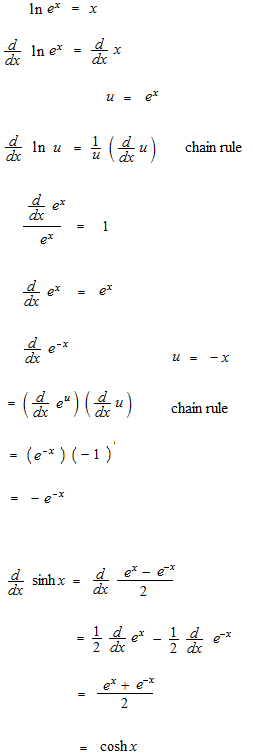
Taylor series is very easy. Please read the page #042 Taylor polynomials, Euler’s identity and then see those equations.
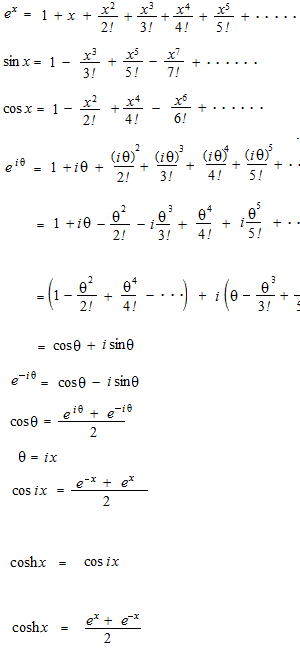

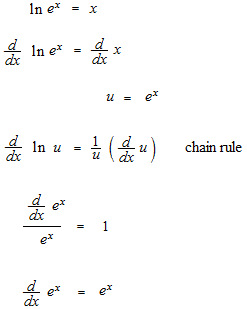
?
